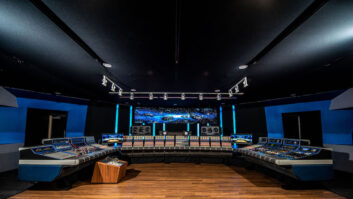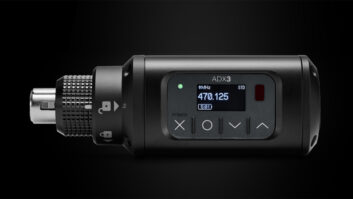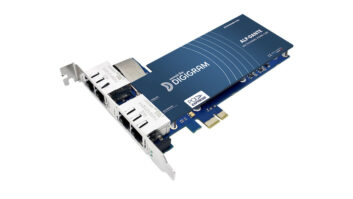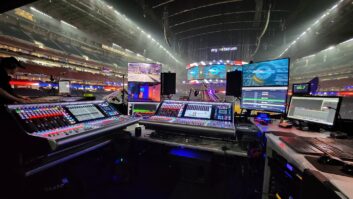Similar to searchlights, loudspeakers must be aimed to be effective. And, in order to cover an audience area effectively while keeping the speakers’ coverage pattern away from reflective surfaces (such as walls and ceilings), it is usually best to raise speakers above the audience members’ heads. Though placing speakers on poles or risers may provide adequate elevation in some situations, many others call for the speakers to be “flown,” or suspended from the building structure.
There are probably a gazillion different ways to securely attach loudspeakers to structures, and there is probably an equivalent number of structure types to be attached to. This article outlines the most common attachment methods and structure types I am familiar with, based on my experience in the contracting and service industries.
Perhaps the most important message in this article is that there are a multitude of suspending and mounting methods, and that no one method is correct for all applications. I recommend that any and all structural attachments are reviewed by a professional engineer to ensure that the attachment method is correct and will perform as designed, with an adequate design factor.
Seismic concerns can be problematic when attaching to structures. It has been my experience that the local building authorities within seismic territories are very reasonable when it comes to approving solutions for the task at hand. When designing the attachment method in a seismic activity zone, it is important to remember that the primary concern for the building authority is that a dynamic load, such as a shocking movement or a rolling movement, will not overload the attachment method. It is not uncommon for dynamic loads to exceed two or three times the static load of the object being suspended or mounted, so load dynamics are a valid concern. Another concern relates to the materials being attached to; some materials have excellent structural properties in compression but not in tension, and vice versa. In any case, I strongly recommend consulting a professional engineer if you suspect any seismic activity.
The hardware used in attaching to structures should only be of a type that is manufactured for overhead use and is fully traceable product. Traceability ensures quality products and is a critical part of a risk-management program that can protect designers, installers and end-users from product liability risk. More information on risk-management systems can be found at www.marshalriskmanagement.com.
COMMON SENSE RULES
For someone who is not accustomed to the task, the idea of attaching to a structure to suspend a heavy object can be worrisome. In my opinion, someone who is not comfortable with the task should not attempt this without a professional’s assistance (someone who is in the business of attaching to structures). The stakes are simply too high should the attachment method fail. Here are a few tested, common sense rules that should ensure a safe and durable installation:
- Purchase only traceable products intended for overhead suspension.
- Get assistance and guidance from product manufacturers prior to installation.
- Have the design reviewed and/or approved by a professional engineer.
- Install the attachment hardware in a methodical way, paying attention to every structural detail along the way.
- Install the hardware exactly as the manufacturer and professional engineer recommend.
- If there is a question about anything, stop and get the answer before proceeding.
- If you are suspicious or uncomfortable with the structural attachment at any point, stop and then find a solution or another way; do not install anything you feel may be unsafe.
Readers who wish to expand their knowledge of attaching to structures and suspending or mounting objects overhead should contact contractor trade organizations and manufacturers of overhead suspension hardware for relevant seminars and training opportunities.
Andrew T. Martin is president and CEO of ATM Group Inc., which operates three business units in Carson, Calif. ATM Fly-Ware designs, manufactures and distributes loudspeaker rigging hardware and video wall suspension hardware. BendiForm metalworks designs and manufactures structural sheet-metal products and architectural elements. Marshal Risk Management Systems is a risk-management consultant to the high-risk entertainment industry. For more information, visit www.atmflyware.com or call 888/RIG-MORE.







